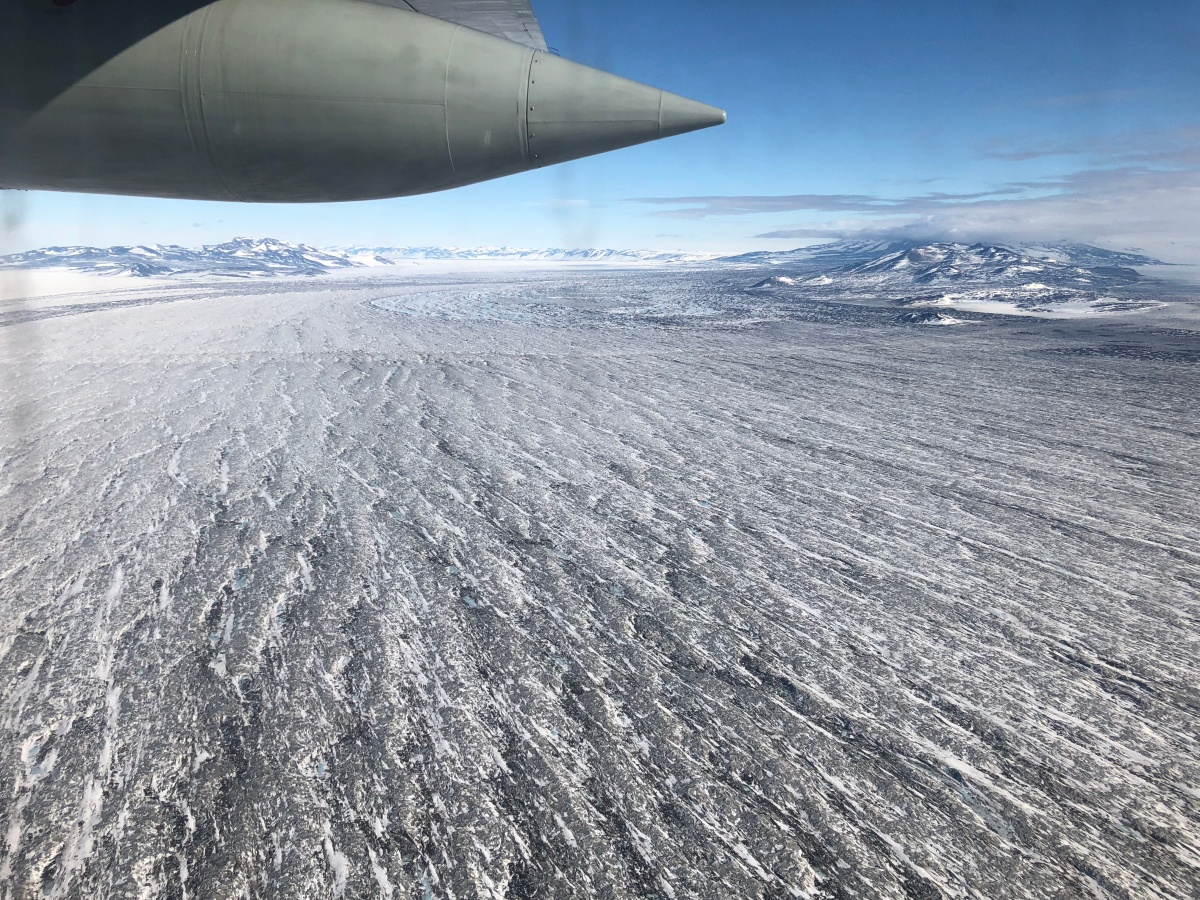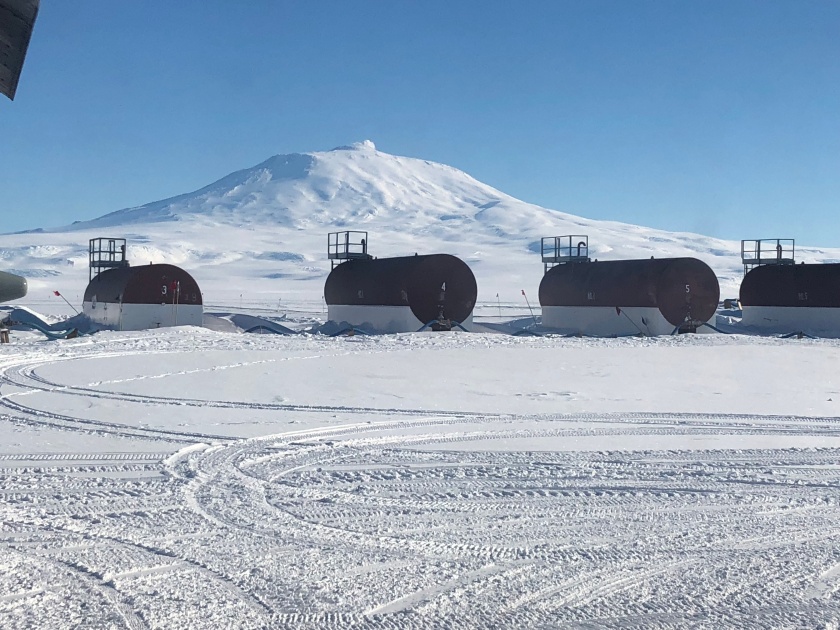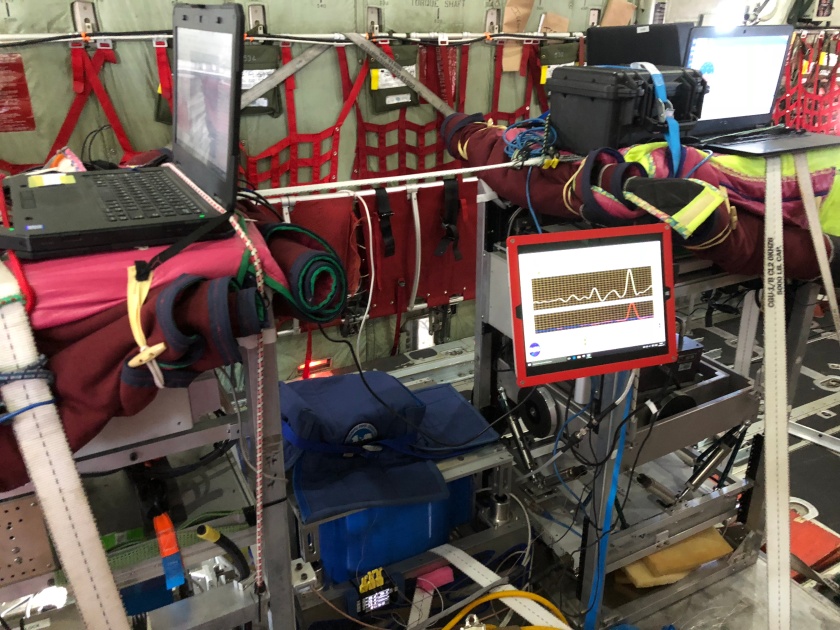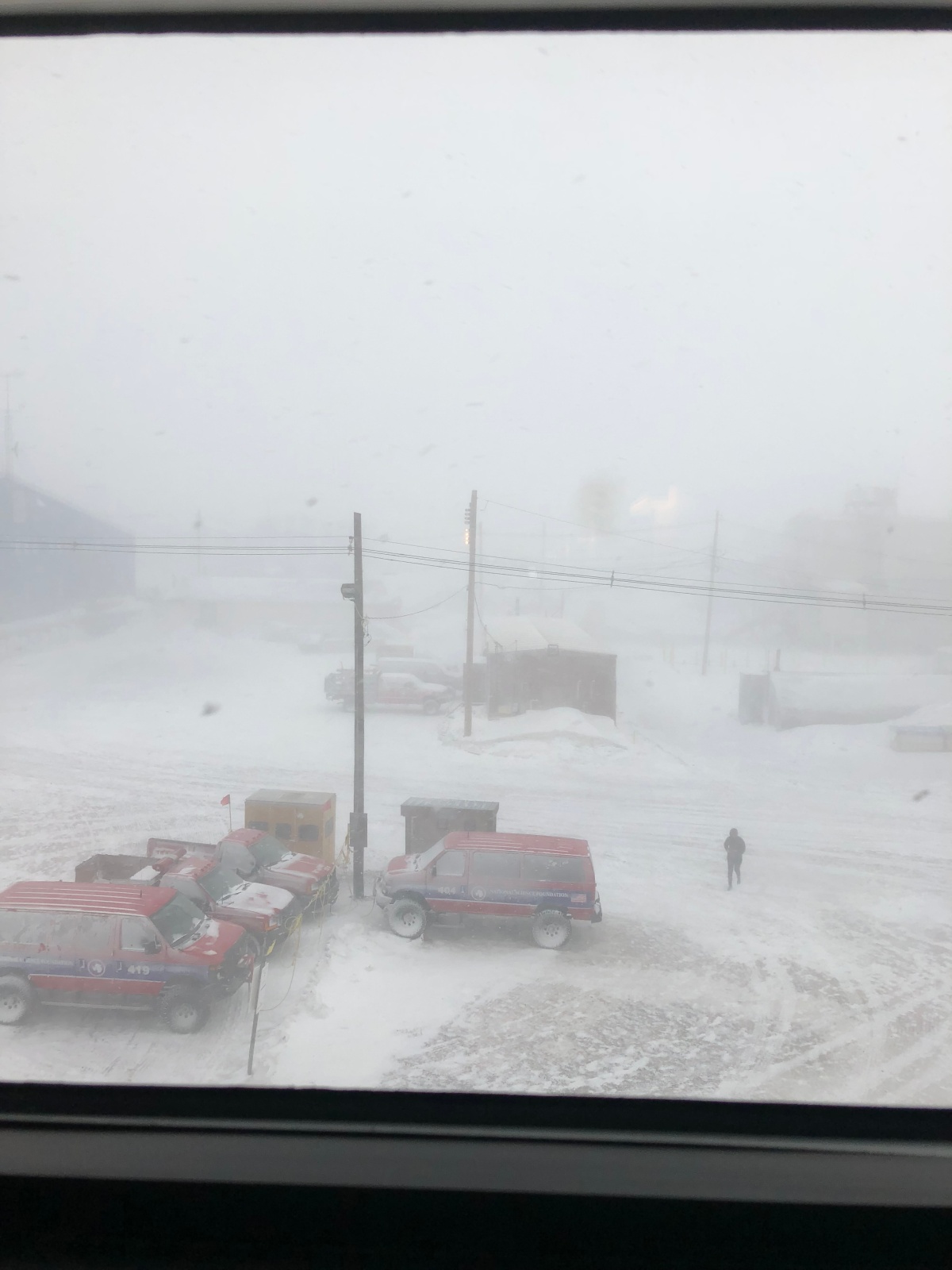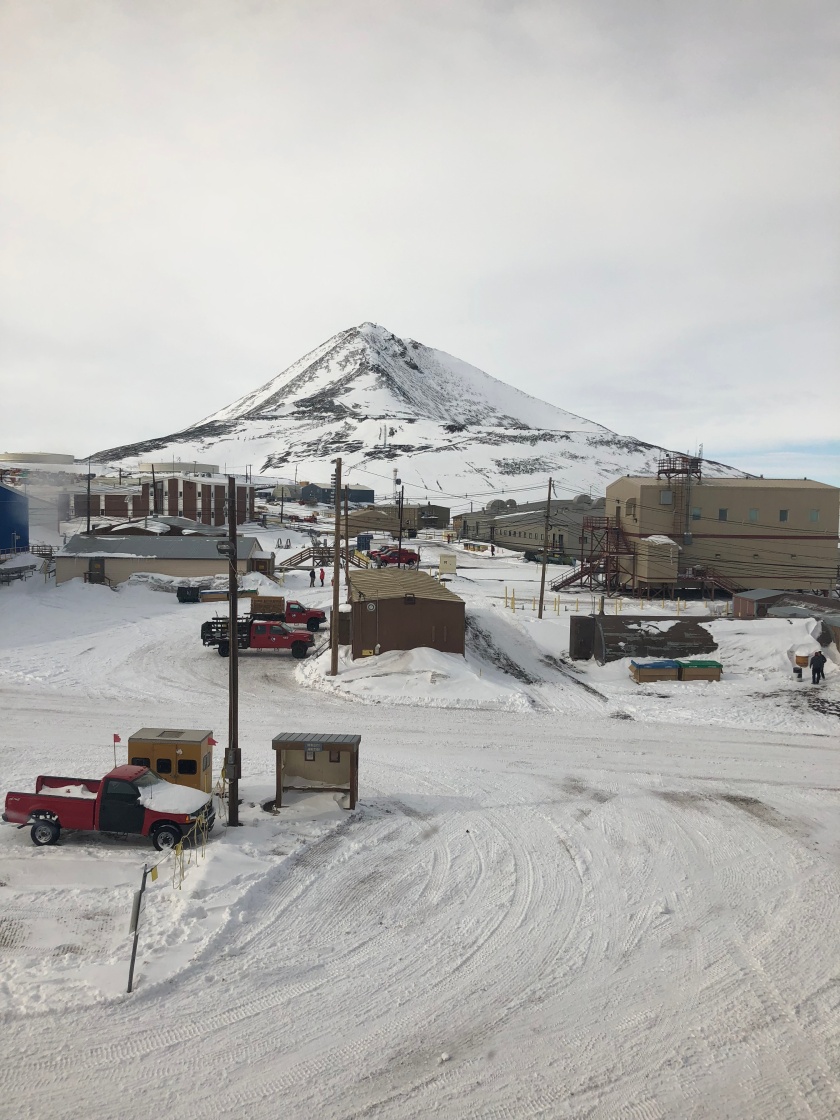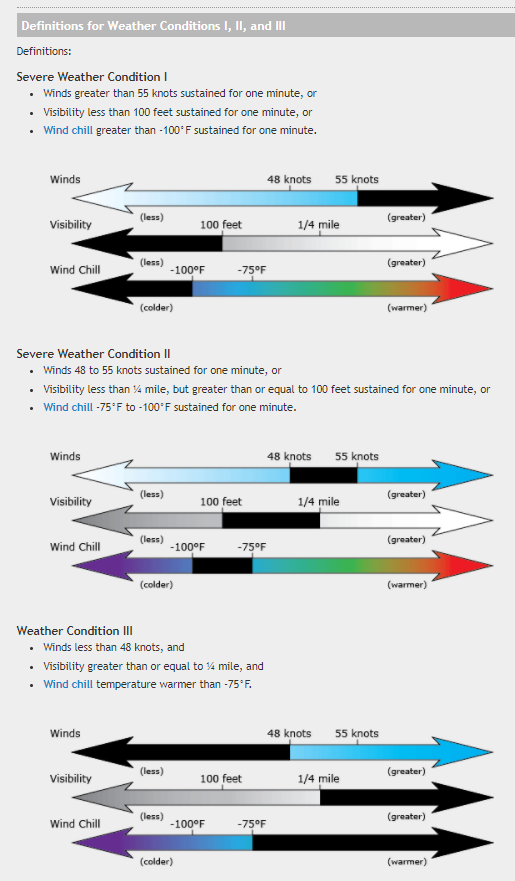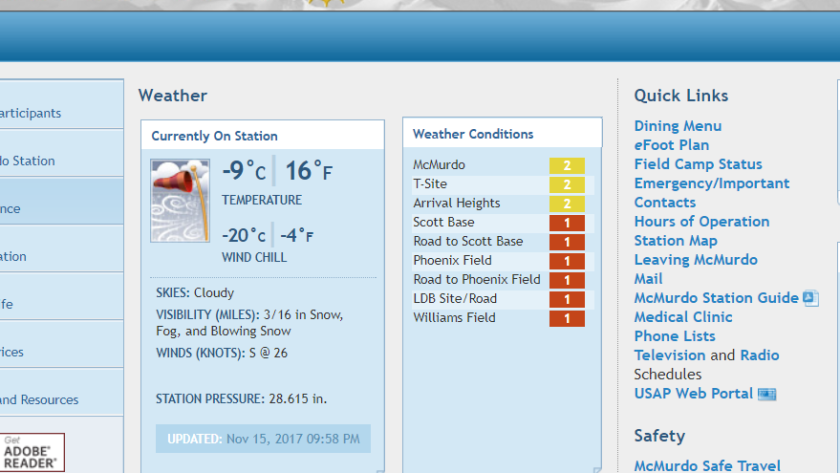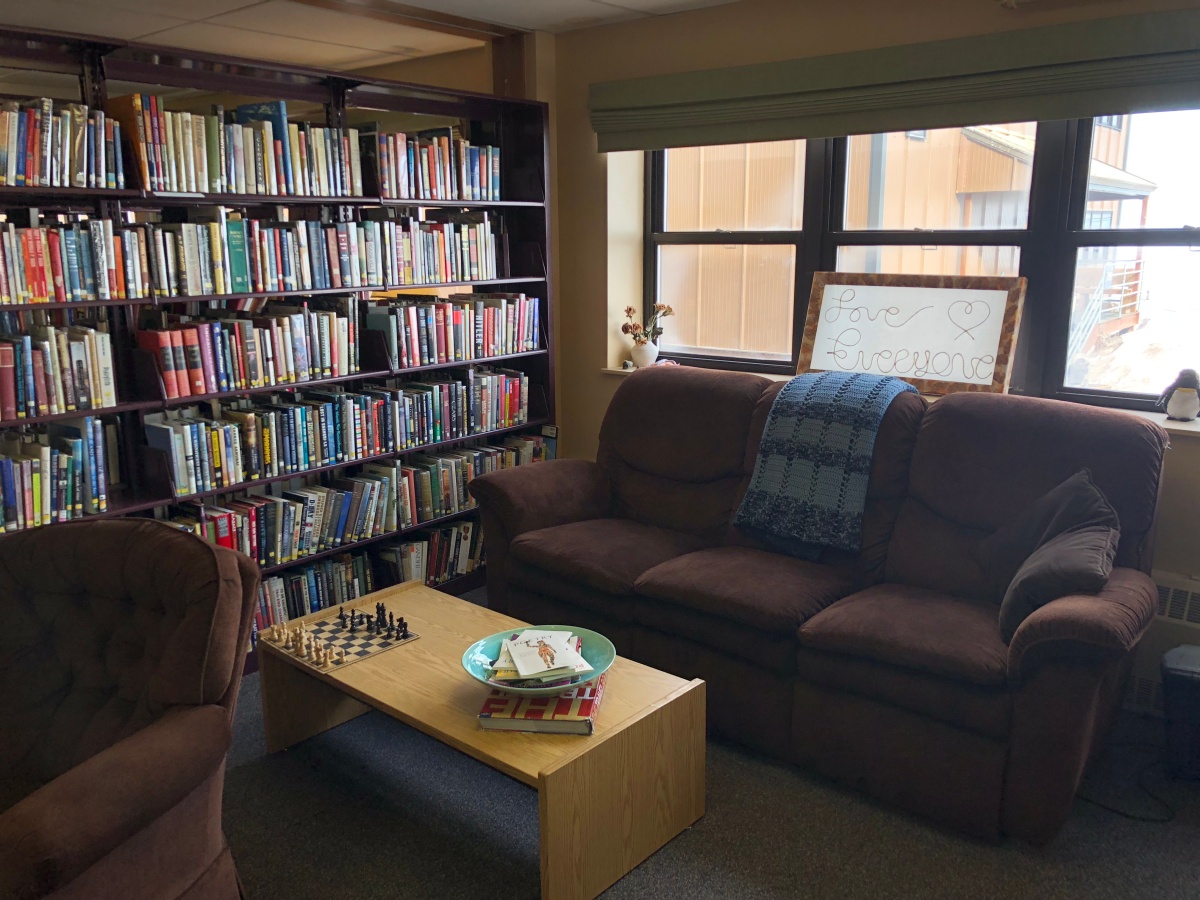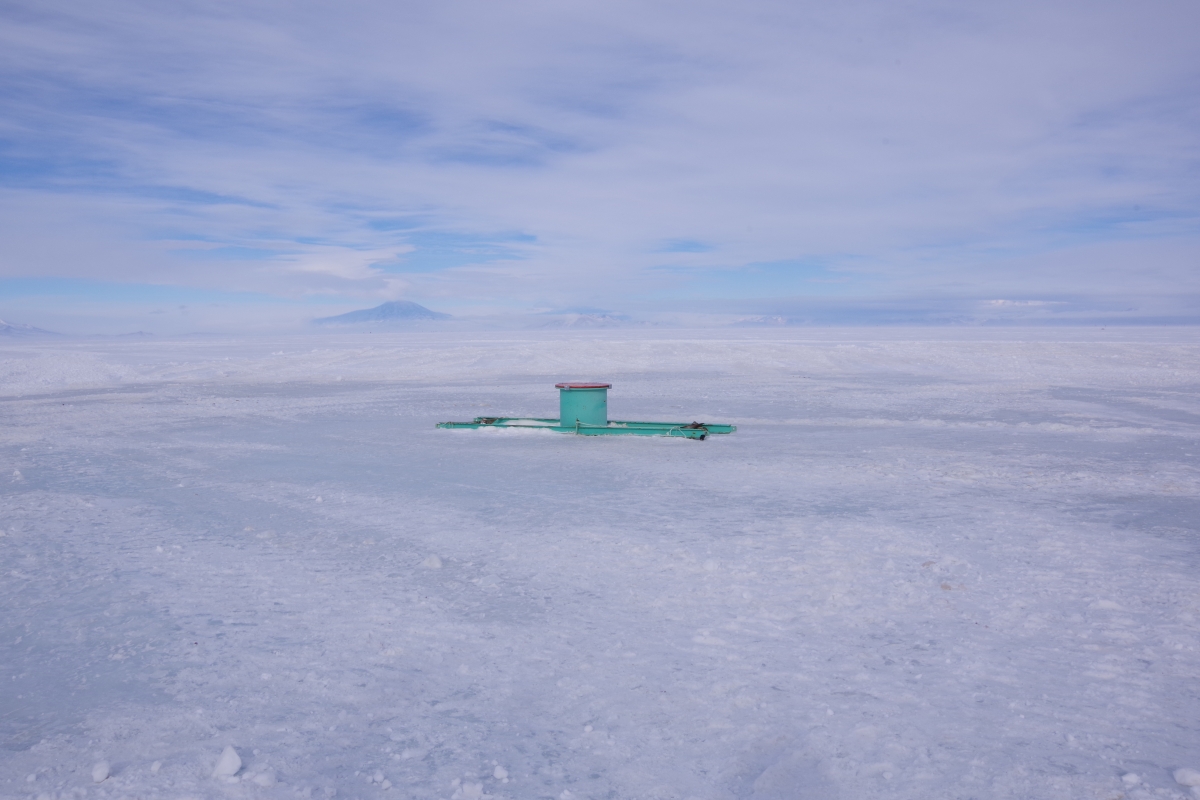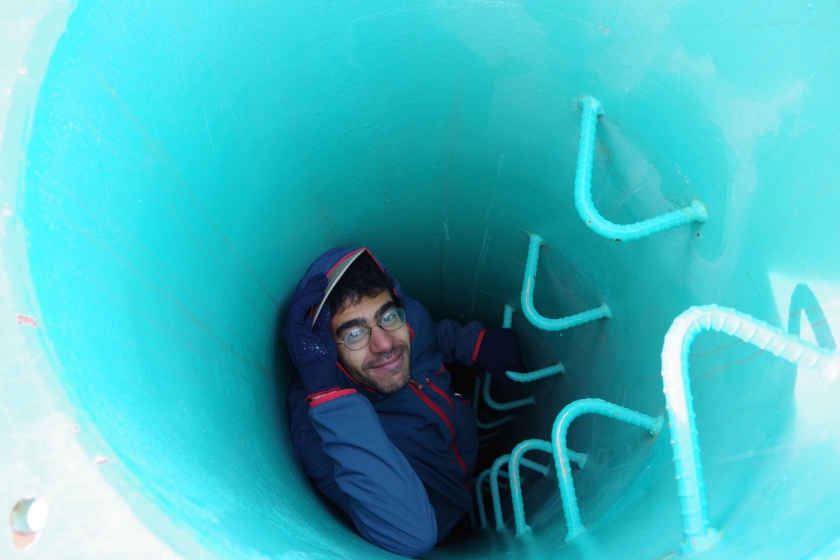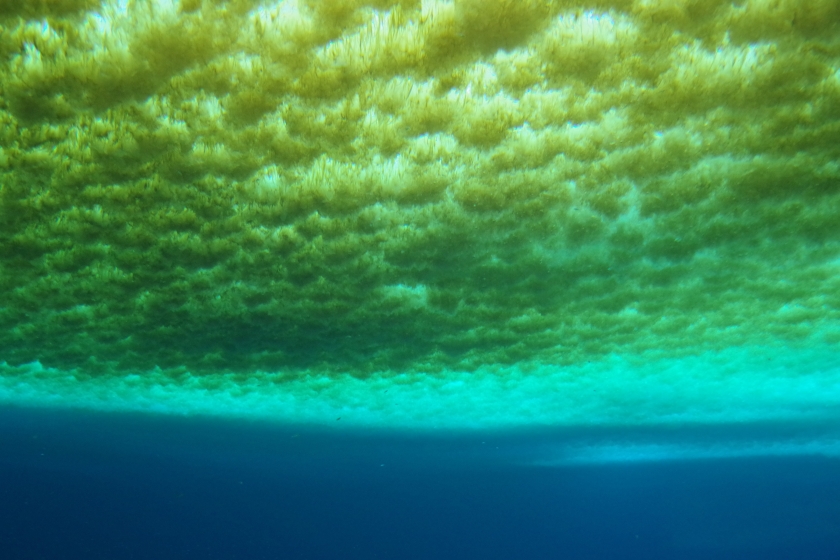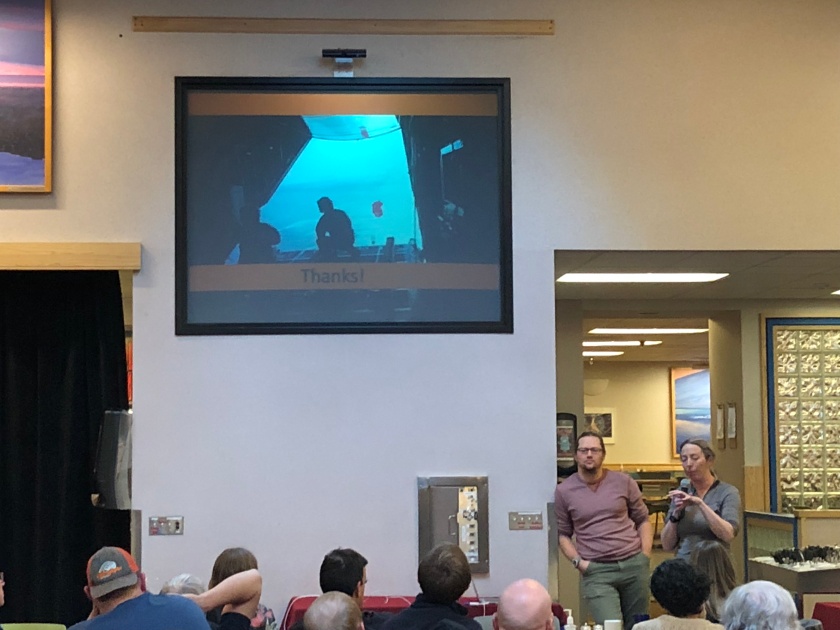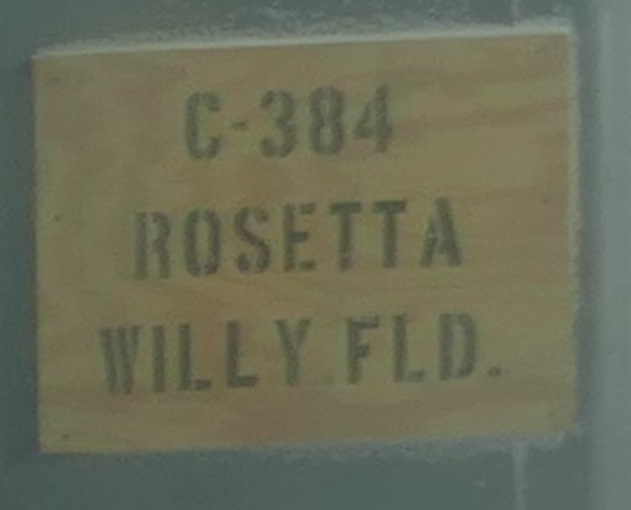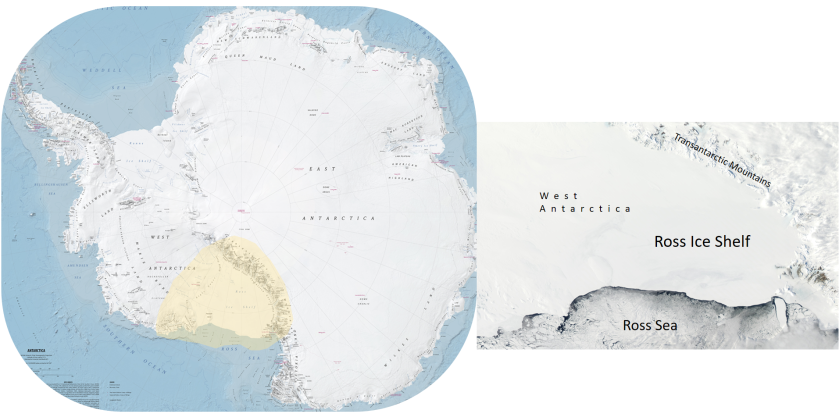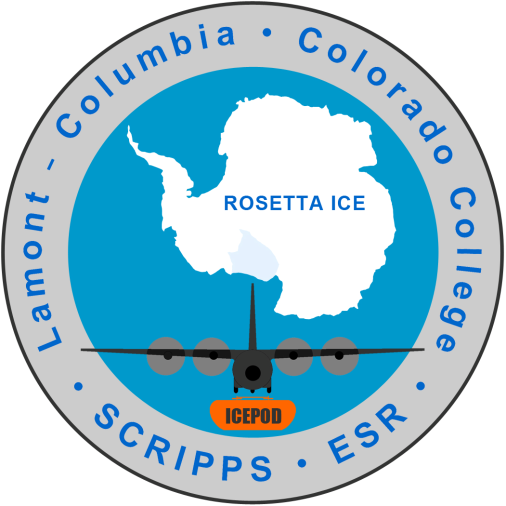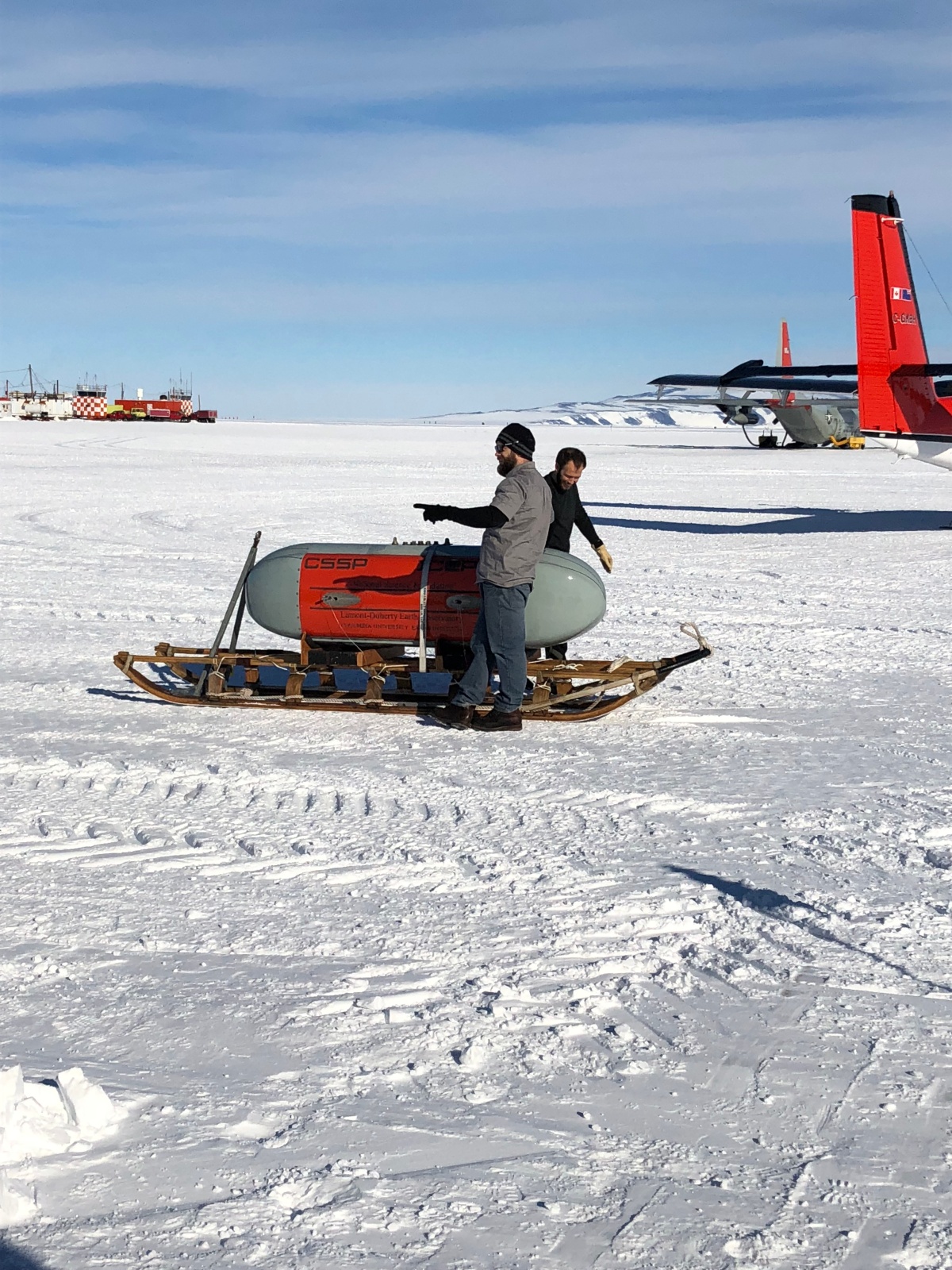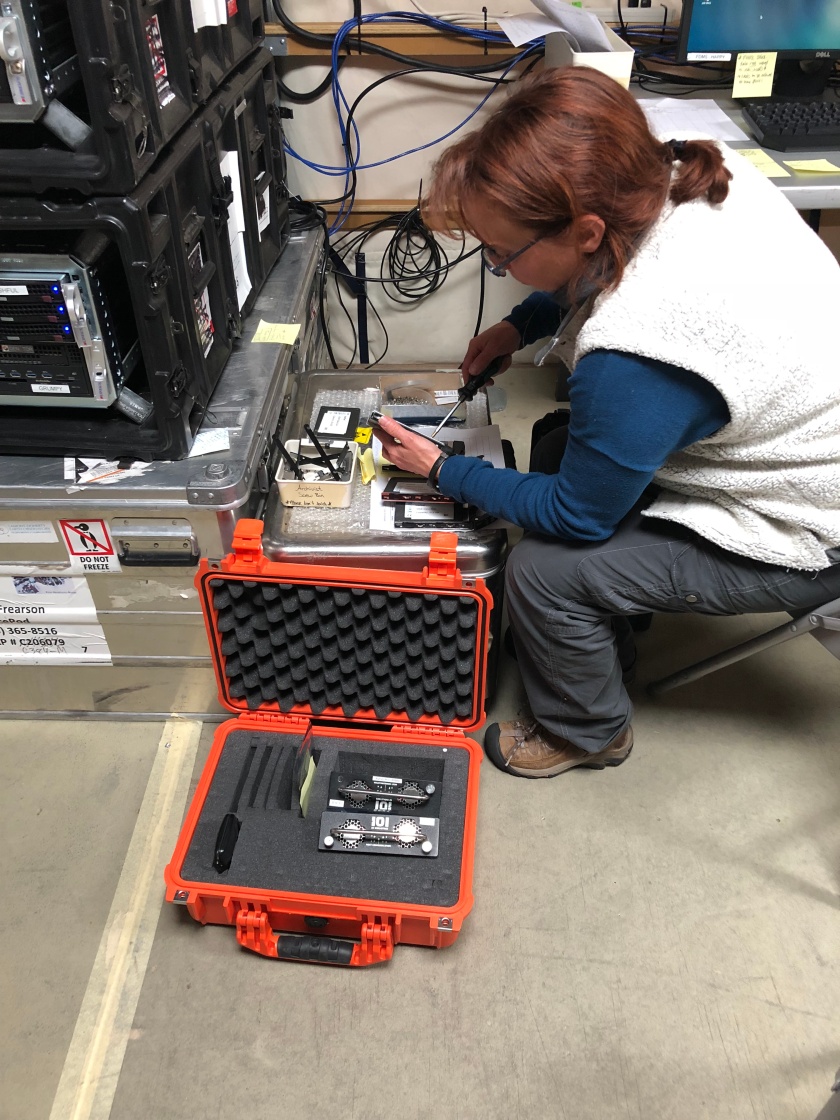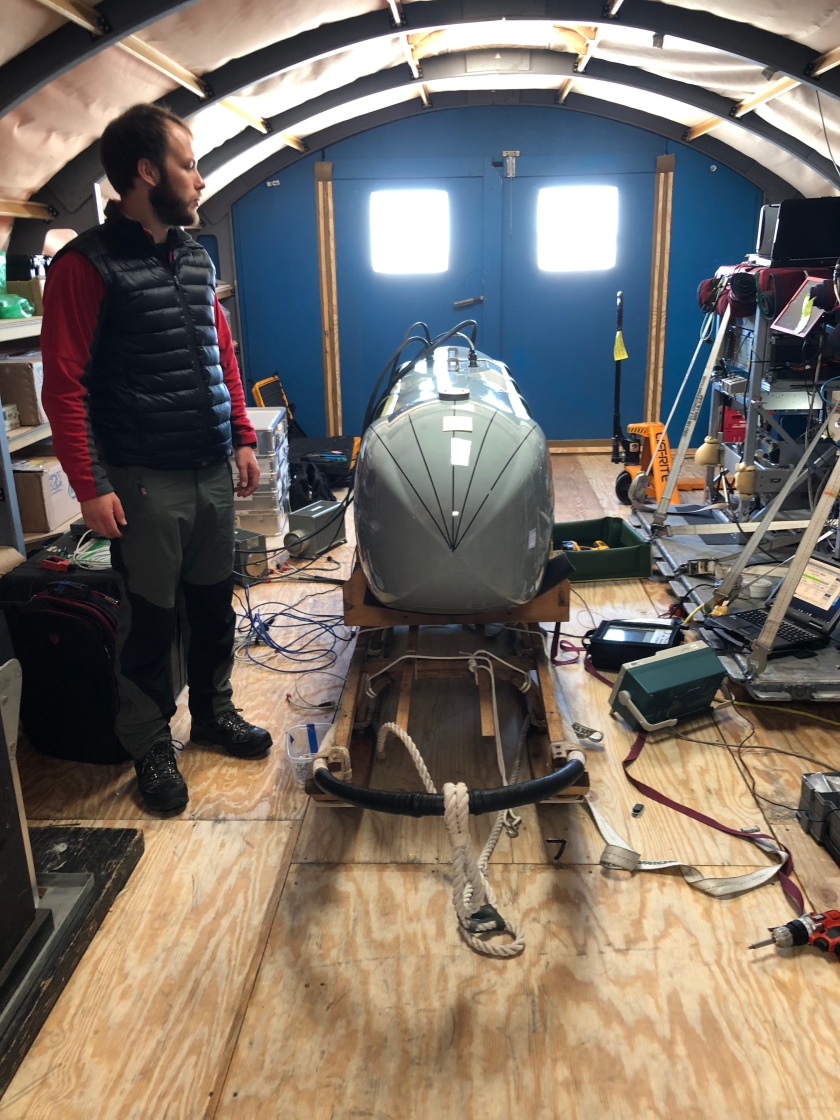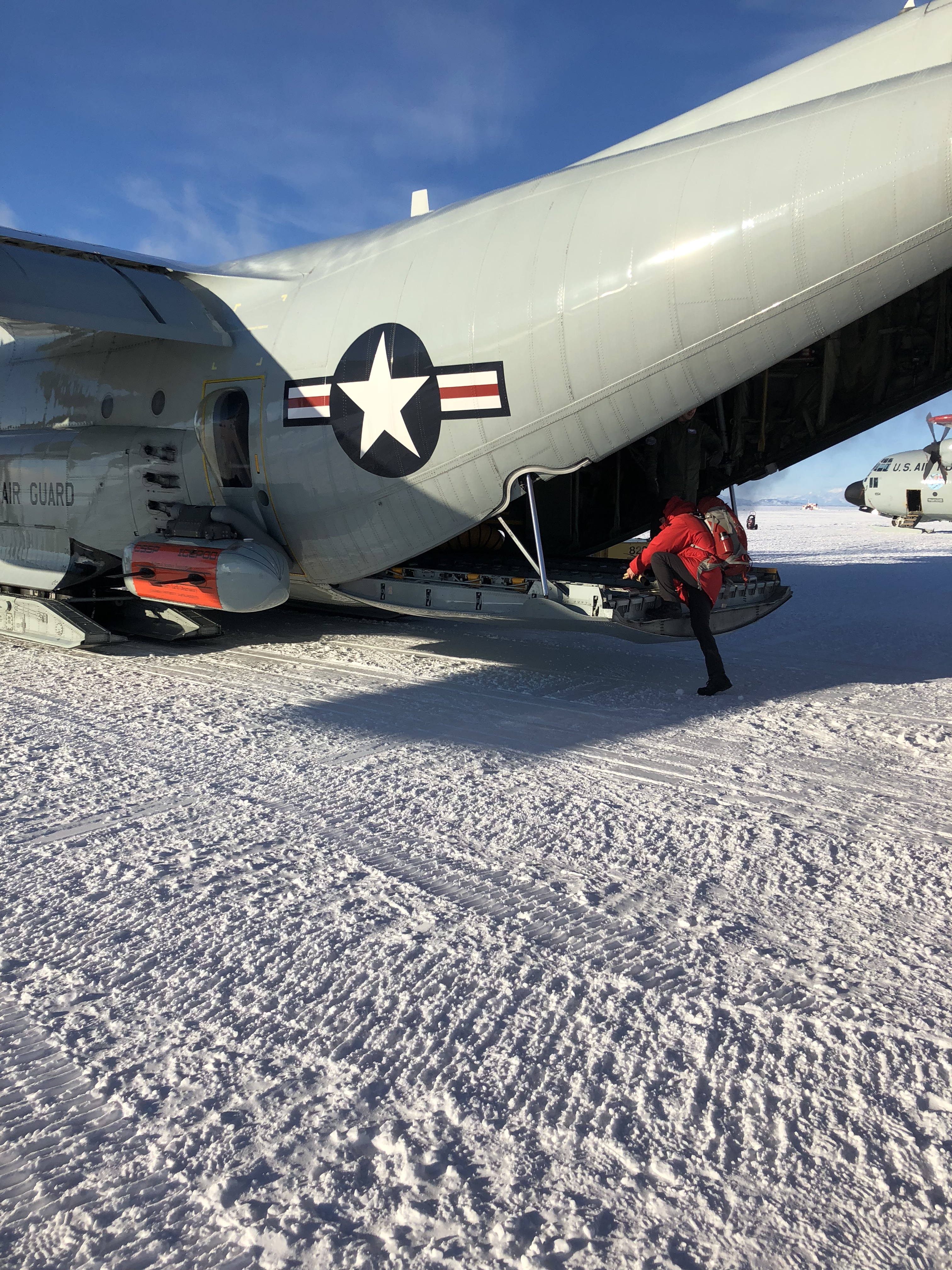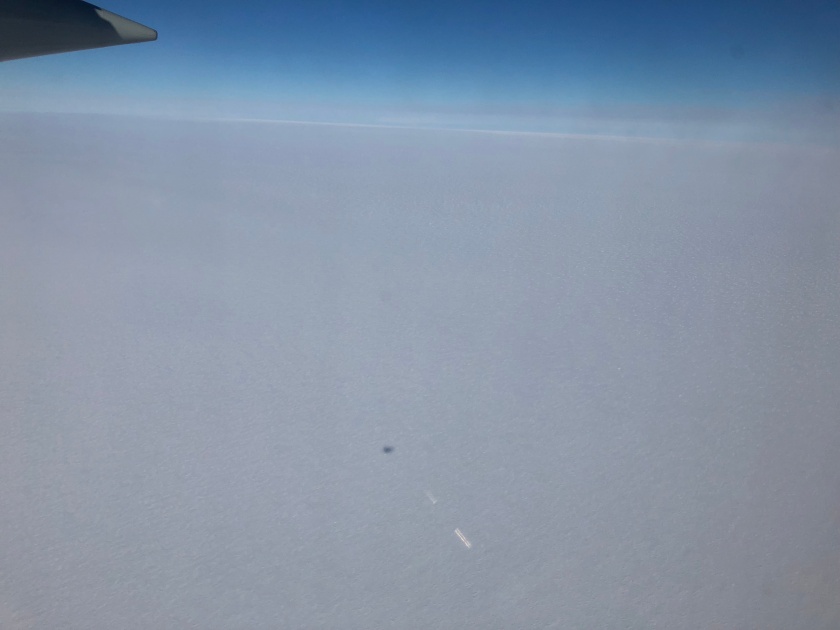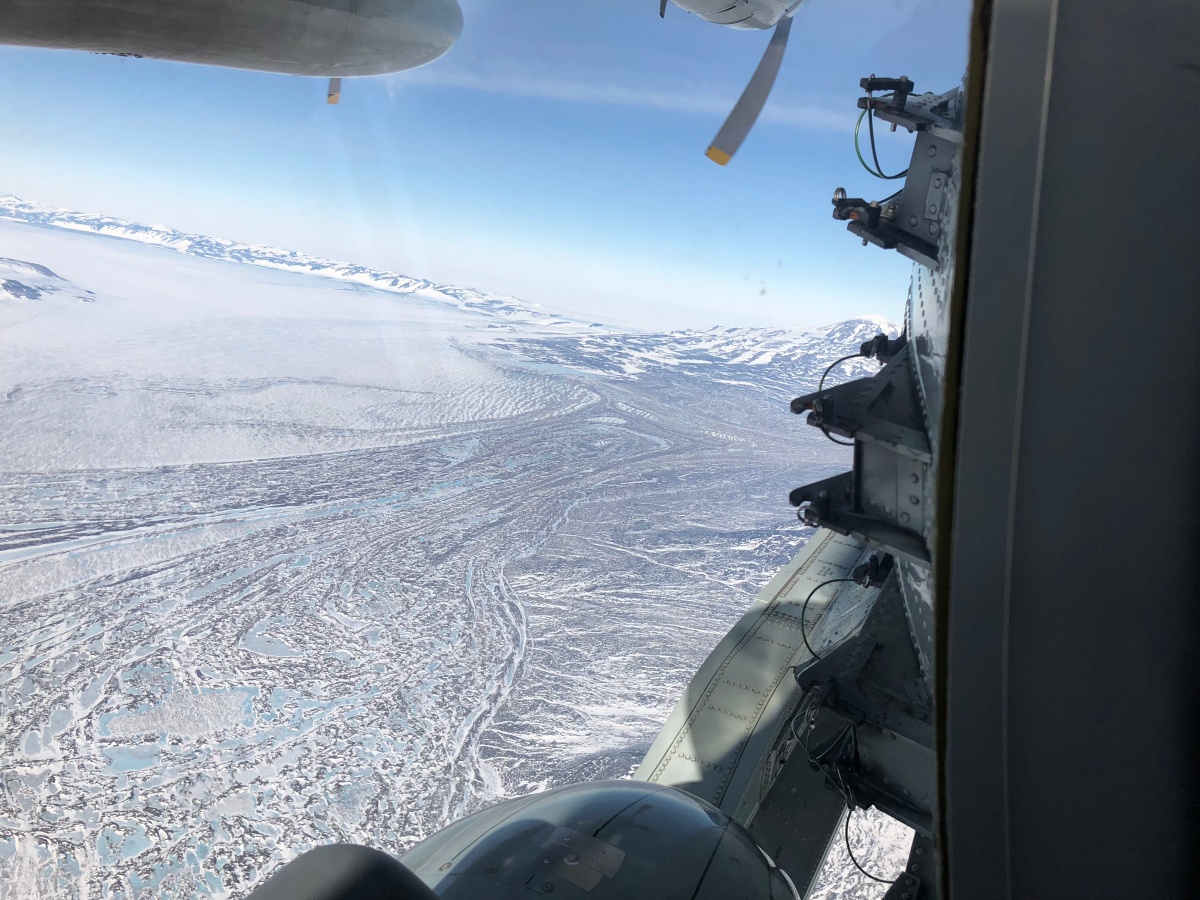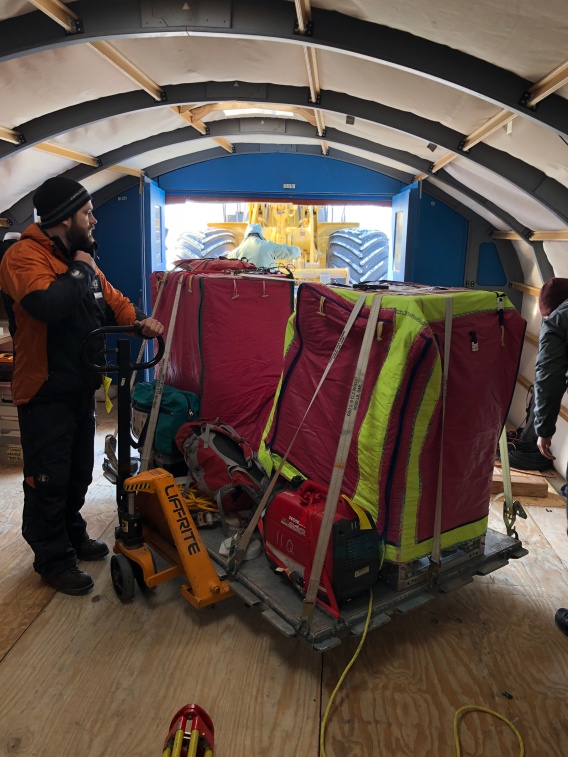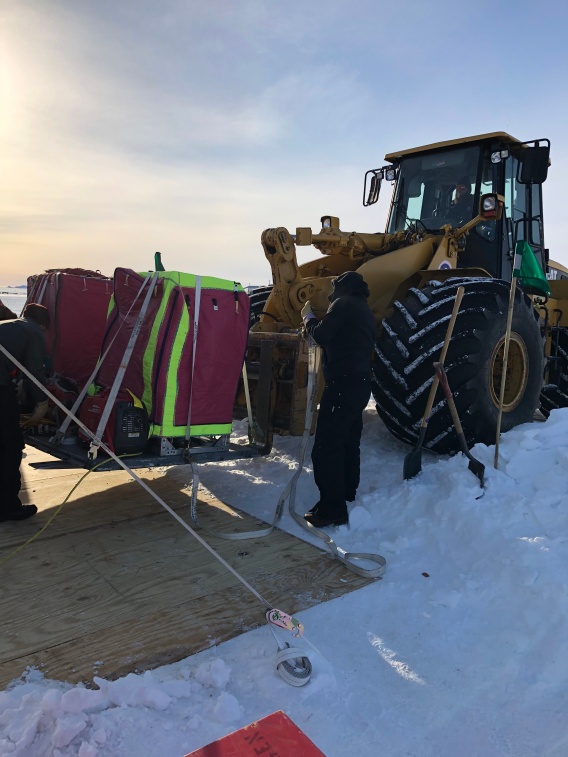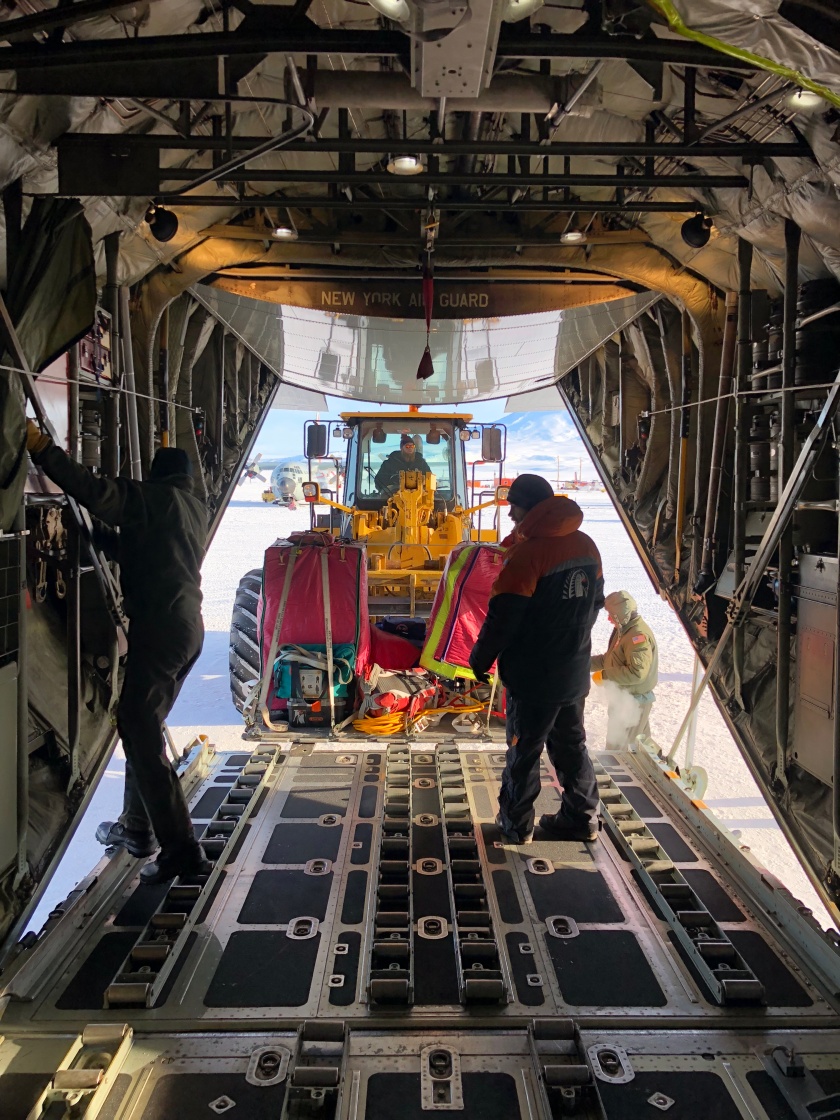There are many types of C-130s. I am not sure what the “L” stands for, but it means the plane lands on skis. These planes are old (from the 1980s I believe) and mechanical issues are frequent. This season we have been delayed due to problems with the engine, propeller, and rear ski. If maintenance requires at least a whole shift’s worth of work, then the plane is “hard broke”.
Radar instruments such as CDR (Crevasse Detection Radar) have been attached to the lever arm of an LC-130 in the past. This is why IcePod was designed with Hercs in mind as our platform. And for the reason that these are the only aircrafts available in McMurdo suitable for our kind of surveying .
IcePod is equipped with two sets of radar: Deep Ice Radar (DICE) and Shallow Ice Radar (SIR). DICE can penetrate through ice up to about 4kms and can detect the base of the ice shelf, while SIR provides better resolution, seeing to 400m. The SIR is a frequency modulated continuous wave system, while the DICE is a pulsed system. The SIR uses different antennas for transmitting and receiving; DICE is a mono-static system (although it does not appear so).

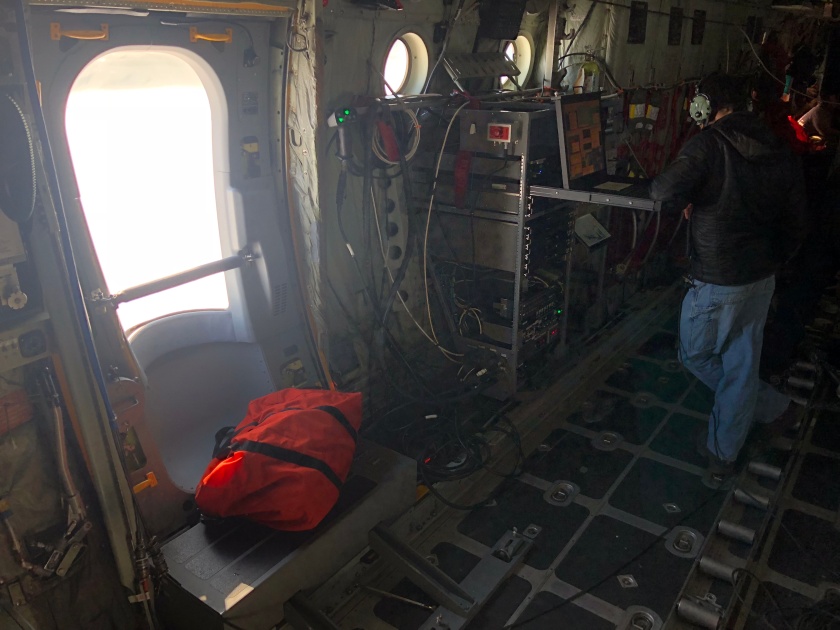
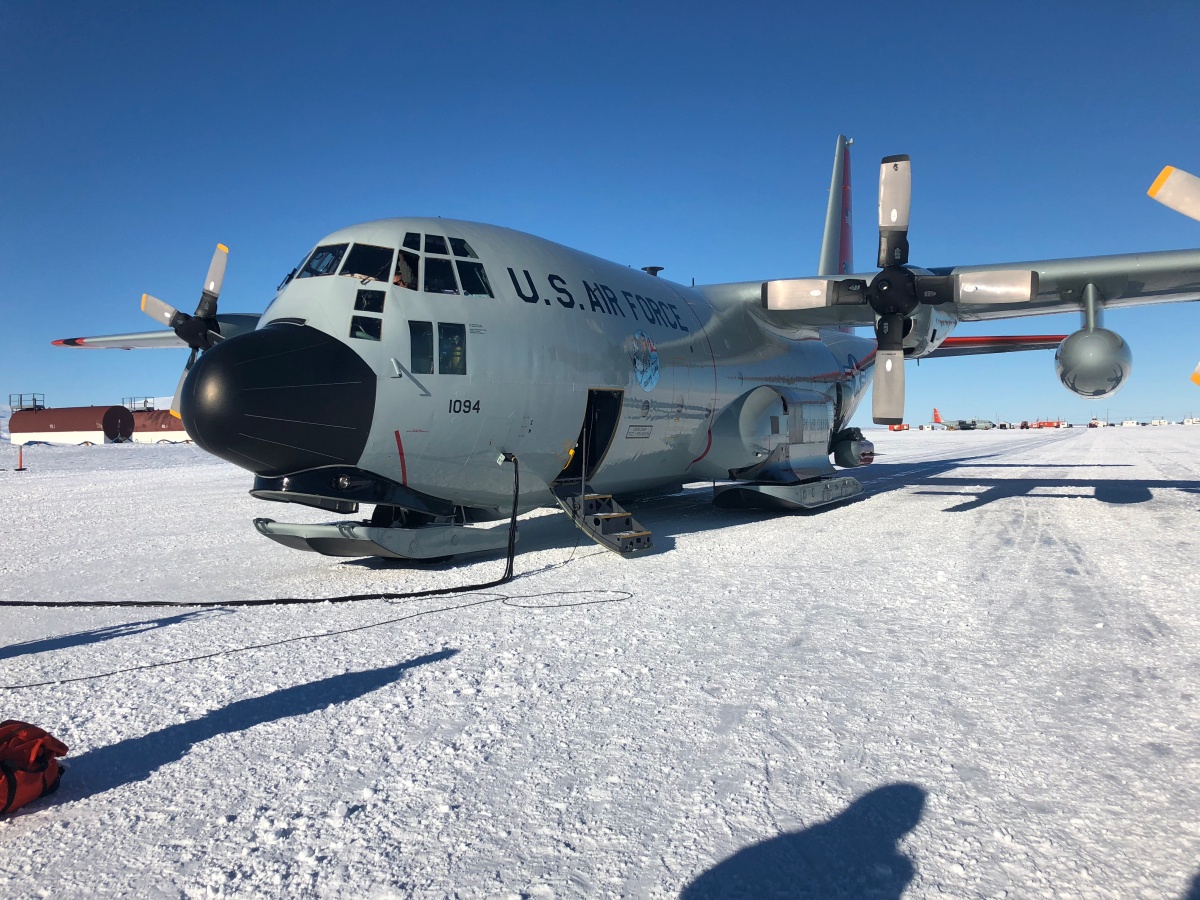
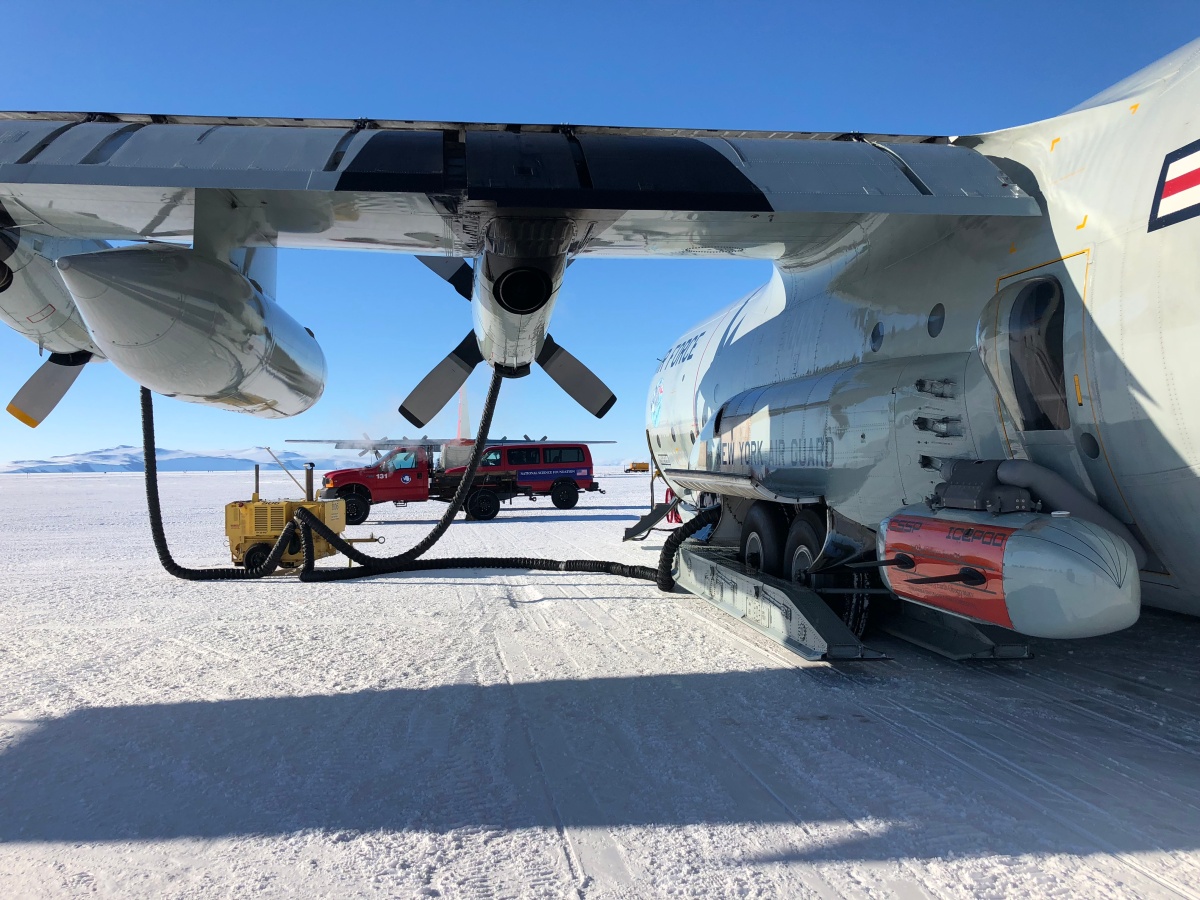
![IMG_0483[1]](https://rosettaiceacl.files.wordpress.com/2017/11/img_04831.jpg?w=840)
![IMG_0473[1]](https://rosettaiceacl.files.wordpress.com/2017/11/img_04731.jpg?w=840)
